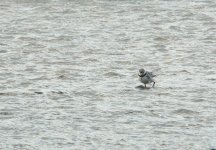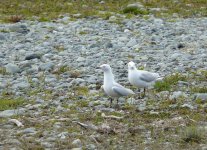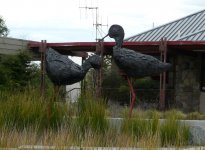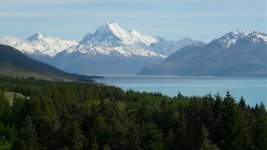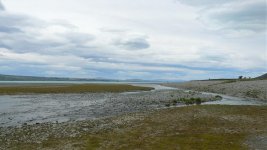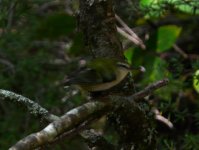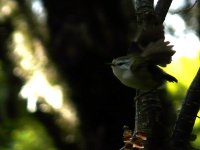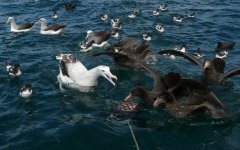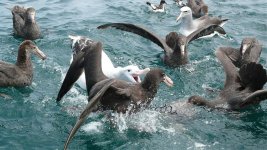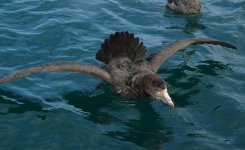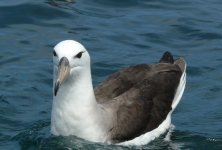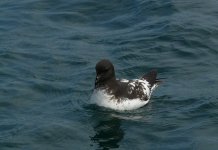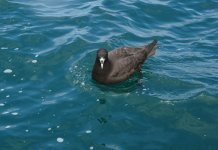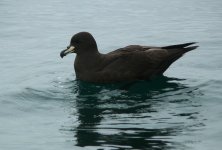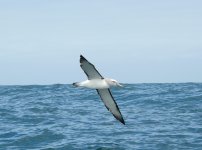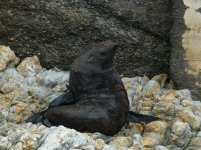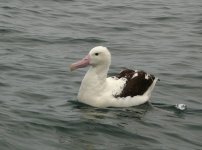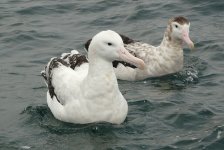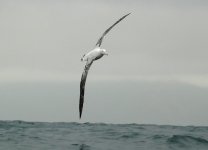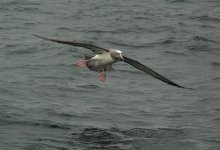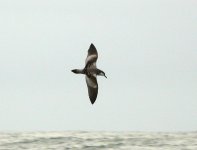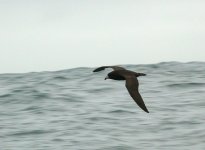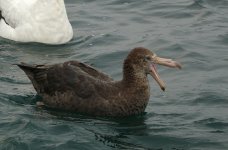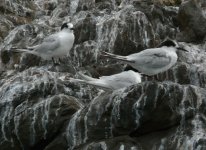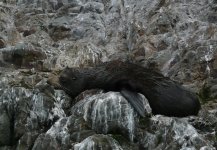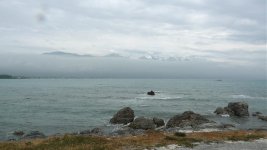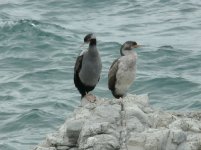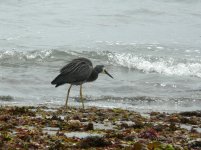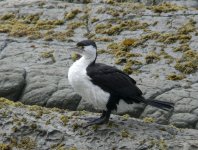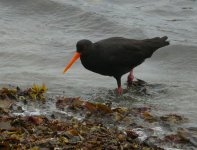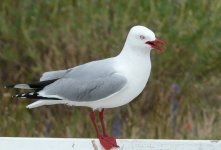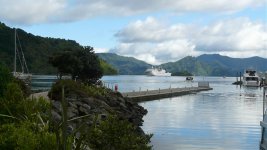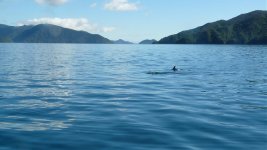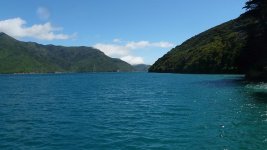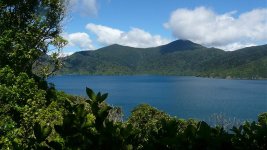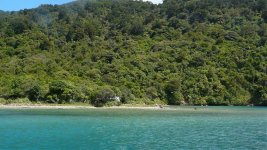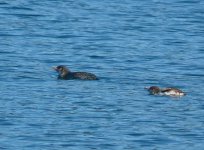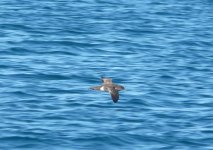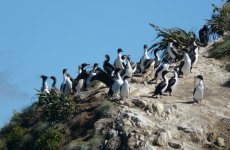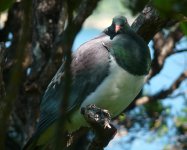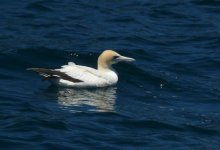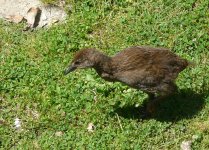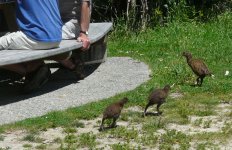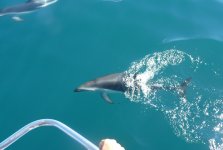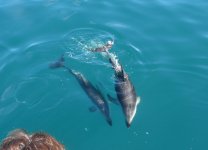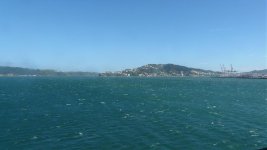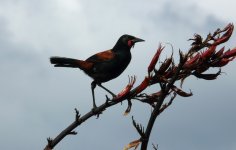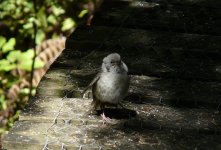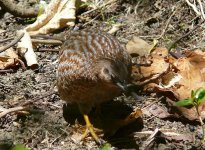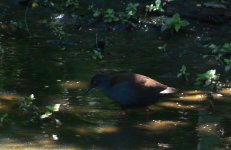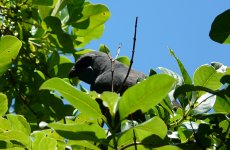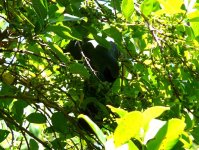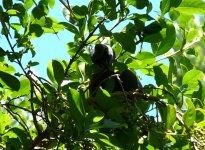
Day Seven: 29th November, Glentanner and Mount Cook Village
The next day I was doing a bit more Black Stilt searching and also looking for a few other notable species. I caught the Cook Connection shuttle bus from Twizel up to the small airfield at Glentanner. Just north of the airfield a marked track goes out onto the braided river beds of the Tasman Delta, near where it reaches Lake Pukaki. This is a great place to look for the specialities of this habitat and to enjoy the views towards Aoraki Mount Cook.
Soon after going through gate along the track I found a group of four Black Stilts roosting in the grass. They were mostly young birds - I guess a year old - with a mixture of black and white plumage. They were all much darker than the hybrid stilts I'd seen the day before. I eventually saw around 9 Black Stilts at Glentanner, including a couple of distant adults, but didn't see any other stilts there.
Banded Dotterels were very numerous and approachable around the river beds and I had close views of a New Zealand Pipit. Other species included South Island Pied Oystercatcher, which was still looking a lot like one or two other Oystercatchers I could mention, Black-billed Gull, Paradise Shelduck and Black-fronted Tern. The other bird I was hoping to see was one of New Zealand's other charismatic waders, the Wrybill. After a bit of searching I had good views of one feeding in a river bed. They look like a 'normal' wader until you see that strange bill. I probably saw about half a dozen in all - they seemed to be most common in the areas nearer to the lake.
After lunch at the airfield cafe I picked up the Cook Connection shuttle again and headed upriver to Mount Cook Village. This is a bit of a touristy spot but has some very good forest nearby. I was hoping to see Rifleman and New Zealand Falcon here, so asked advice at the information centre. Rifleman sounded easy enough and the falcon seemed possible just south of the village.
I began on the Bowen Bush Walk, which is short trail within the village. A bit of pishing soon brought a Rifleman very close in, a strategy that worked rather well with this species. I then walked the Governor's Forest Trail where several more Rifleman showed in response to pishing. They seemed to appear from nowhere to investigate the noise. I was quite struck by the differences between male and female - the male a bright green and the female almost Treecreeper-like. Like their relatives the Rock Wren, these are tiny but very charismatic birds. Also in the forest I had good views of a Tomtit.
As the trail emerged from the forest, it was possible to see out to the south and up into the mountains. Suspecting this might be a likely spot for the falcon, I set up my scope and waited. Within a couple of minutes a New Zealand Falcon shot past and stooped down towards a high cliff. I caught sight of the rufous vent as it sped past. A few minutes later presumably the same bird reappeared and gave more prolonged but distant views as it headed towards the mountain tops, where it briefly tangled with a passing Australasian Harrier. They're medium-sized falcons and in some ways rather like a Kestrel, with a long tail and slightly rounded wingtips. Their flight seemed rather reminiscent of an accipiter.
So rather an excellent return for the day, despite it being quite relaxed and easy birding. I headed back on the bus to Twizel and then caught another bus to Christchurch. This was quite a long journey through the first 'boring' countryside I'd seen in New Zealand. I then had to search for a place to stay in Christchurch after it turned out that the hostel I'd booked didn't exist any more. It all worked out okay in the end, although I ended up in one of those hostels where everyone who works there seems to be contractually obliged to use the word 'awesome' in every sentence. Next day, I was heading to Kaikoura, which actually was rather awesome.
Some shots from Glentanner:
1. Banded Dotterel. Very smart birds.
2. Female Paradise Shelduck, with progeny.
3. South Island Pied Oystercatcher - remind you of any Oystercatchers you know?
4&5. Some more Black Stilt inaction.
The next day I was doing a bit more Black Stilt searching and also looking for a few other notable species. I caught the Cook Connection shuttle bus from Twizel up to the small airfield at Glentanner. Just north of the airfield a marked track goes out onto the braided river beds of the Tasman Delta, near where it reaches Lake Pukaki. This is a great place to look for the specialities of this habitat and to enjoy the views towards Aoraki Mount Cook.
Soon after going through gate along the track I found a group of four Black Stilts roosting in the grass. They were mostly young birds - I guess a year old - with a mixture of black and white plumage. They were all much darker than the hybrid stilts I'd seen the day before. I eventually saw around 9 Black Stilts at Glentanner, including a couple of distant adults, but didn't see any other stilts there.
Banded Dotterels were very numerous and approachable around the river beds and I had close views of a New Zealand Pipit. Other species included South Island Pied Oystercatcher, which was still looking a lot like one or two other Oystercatchers I could mention, Black-billed Gull, Paradise Shelduck and Black-fronted Tern. The other bird I was hoping to see was one of New Zealand's other charismatic waders, the Wrybill. After a bit of searching I had good views of one feeding in a river bed. They look like a 'normal' wader until you see that strange bill. I probably saw about half a dozen in all - they seemed to be most common in the areas nearer to the lake.
After lunch at the airfield cafe I picked up the Cook Connection shuttle again and headed upriver to Mount Cook Village. This is a bit of a touristy spot but has some very good forest nearby. I was hoping to see Rifleman and New Zealand Falcon here, so asked advice at the information centre. Rifleman sounded easy enough and the falcon seemed possible just south of the village.
I began on the Bowen Bush Walk, which is short trail within the village. A bit of pishing soon brought a Rifleman very close in, a strategy that worked rather well with this species. I then walked the Governor's Forest Trail where several more Rifleman showed in response to pishing. They seemed to appear from nowhere to investigate the noise. I was quite struck by the differences between male and female - the male a bright green and the female almost Treecreeper-like. Like their relatives the Rock Wren, these are tiny but very charismatic birds. Also in the forest I had good views of a Tomtit.
As the trail emerged from the forest, it was possible to see out to the south and up into the mountains. Suspecting this might be a likely spot for the falcon, I set up my scope and waited. Within a couple of minutes a New Zealand Falcon shot past and stooped down towards a high cliff. I caught sight of the rufous vent as it sped past. A few minutes later presumably the same bird reappeared and gave more prolonged but distant views as it headed towards the mountain tops, where it briefly tangled with a passing Australasian Harrier. They're medium-sized falcons and in some ways rather like a Kestrel, with a long tail and slightly rounded wingtips. Their flight seemed rather reminiscent of an accipiter.
So rather an excellent return for the day, despite it being quite relaxed and easy birding. I headed back on the bus to Twizel and then caught another bus to Christchurch. This was quite a long journey through the first 'boring' countryside I'd seen in New Zealand. I then had to search for a place to stay in Christchurch after it turned out that the hostel I'd booked didn't exist any more. It all worked out okay in the end, although I ended up in one of those hostels where everyone who works there seems to be contractually obliged to use the word 'awesome' in every sentence. Next day, I was heading to Kaikoura, which actually was rather awesome.
Some shots from Glentanner:
1. Banded Dotterel. Very smart birds.
2. Female Paradise Shelduck, with progeny.
3. South Island Pied Oystercatcher - remind you of any Oystercatchers you know?
4&5. Some more Black Stilt inaction.
Attachments
-
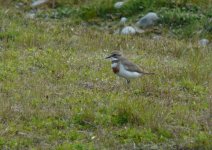 Banded_Dotterel_Glentanner_291108a.jpg281 KB · Views: 243
Banded_Dotterel_Glentanner_291108a.jpg281 KB · Views: 243 -
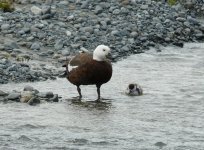 Paradise_Shelduck_Glentanner_291108a.jpg281.7 KB · Views: 216
Paradise_Shelduck_Glentanner_291108a.jpg281.7 KB · Views: 216 -
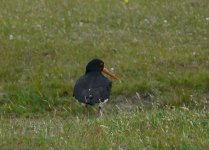 SIPied_Oystercatcher_Glentanner_291108a.jpg237.5 KB · Views: 217
SIPied_Oystercatcher_Glentanner_291108a.jpg237.5 KB · Views: 217 -
 Black_Stilt_Glentanner_291108a.jpg267.5 KB · Views: 223
Black_Stilt_Glentanner_291108a.jpg267.5 KB · Views: 223 -
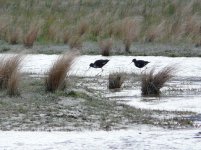 Black_Stilt_Glentanner_291108b.jpg282.4 KB · Views: 229
Black_Stilt_Glentanner_291108b.jpg282.4 KB · Views: 229
Last edited:





